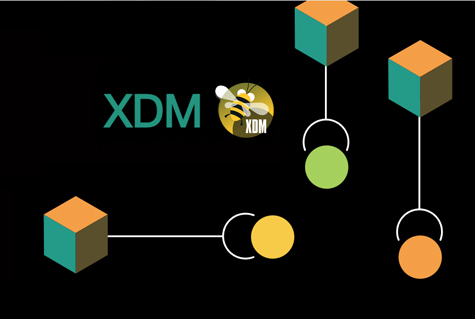“A chain is only as strong as its weakest link.” This metaphor makes it clear that by improving this one weak spot in the system, you can ake huge productivity gains, whilst investing in areas other than the limiting factor will have little or no effect.
Such thoughts are basic strategic considerations that address the question of where an investment will have the greatest impact. The answer: Wherever a solution resolves the biggest obstacle to the further development of the system, then that’s where the leverage is greatest.
An investment with leverage
If we consider IT and software development as a systemically relevant key technology of digitalization, it would be highly advisable from a strategic point of view to analyze the fundamental weaknesses.
One major challenge is certainly the lack of suitable programmers. Unfortunately, these do not grow on trees, but they are still urgently needed for the continuous development of applications.
What can, however, be done in the short term is to analyze the software development processes with regard to bottlenecks. Which factors slow down the processes or reduce the product quality?
Effective approaches to improvement can be found where relatively unspectacular components of the development process have been neglected and have meanwhile become a delaying factor to value creation.
These can often be optimized through cost-effective measures, thus triggering a positive chain reaction that benefits the overall system.
Example: Test data provision can become an obstacle
Let’s look at software testing. This is a crucial task for coding and quality control in the process of continuous delivery and improvement of applications. High quality test data is required for effective software testing. The requirements for such test data vary depending on which test is performed in which development phase.
In practice, the procurement of such test data often turns out to be a challenging factor. Traditionally, in-house developed solutions are sed here. How would a fundamental solution to this problem affect the entire software development process? What would change, for example, through software-based automation of test data acquisition?
Trigger positive chain reactions
The automation of test data acquisition could – in the best case – achieve the following synergistic effects:
Test data at the push of a button for developers and testers mean no delays in development and therefore no unused resources due to waiting times or time-consuming data collection. It also brings higher testing quality through real live data, higher security through proven GDPR compliance, and faster application deployment.
All this happens with lower error rate, a higher adaptation speed if changes are necessary, it improves the motivation and reduces frustration among developers. This leads to a relief of the technical divisions and project teams when providing test data, and to a faster availability of the customer application.
All in all, there will be a higher reaction speed in case of external influences, faster cycles of market adaptation, an optimization of development speed and all this brings competitive advantage over slower competitors. Energy and resources can be invested in improvements of other areas.
High benefit at low cost
This
example shows how a small but strategically important improvement can relieve
the project teams and directly contribute to competitiveness.
If test
data management has not yet been optimized, a high benefit can be generated
here at relatively low cost.
The TDM
experts at UBS Hainer are the people to contact for professional support in the
area of test data automation.


